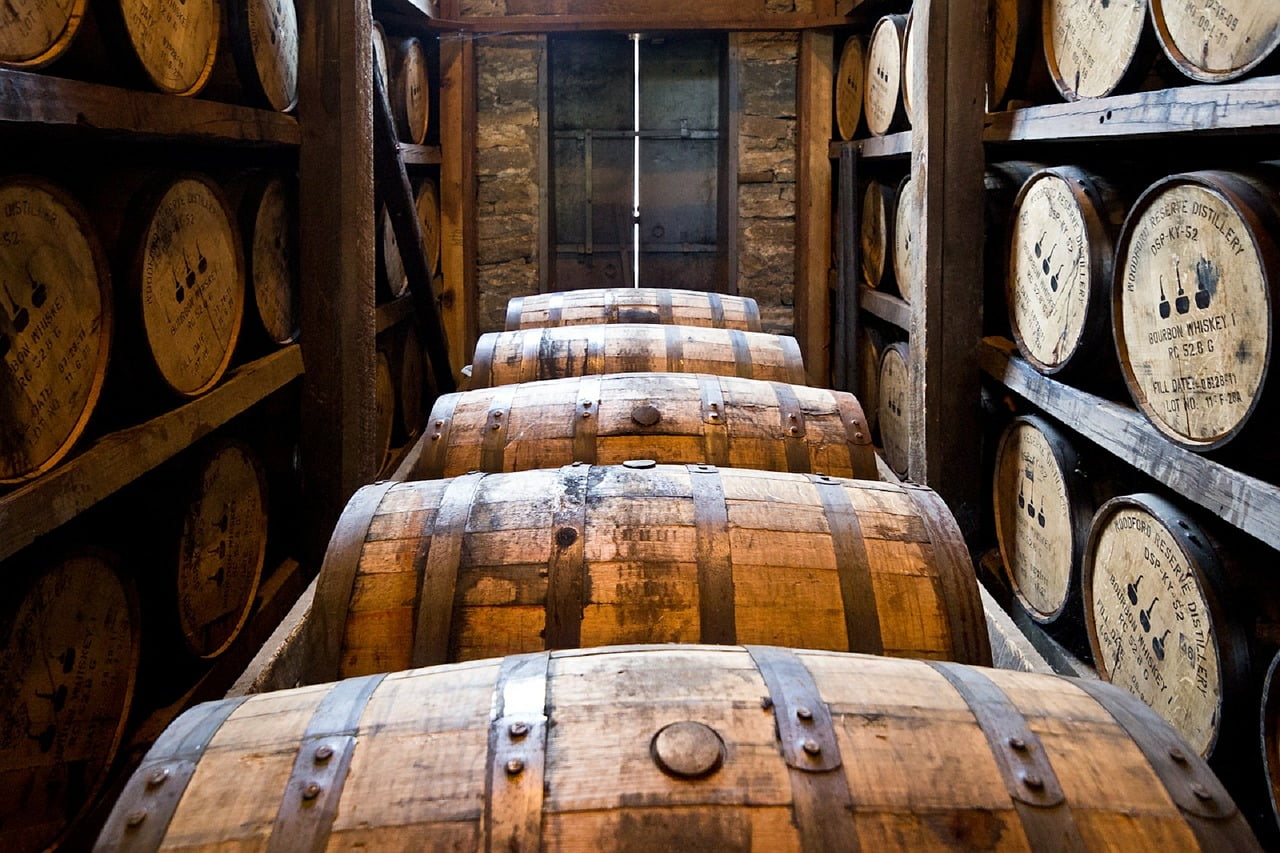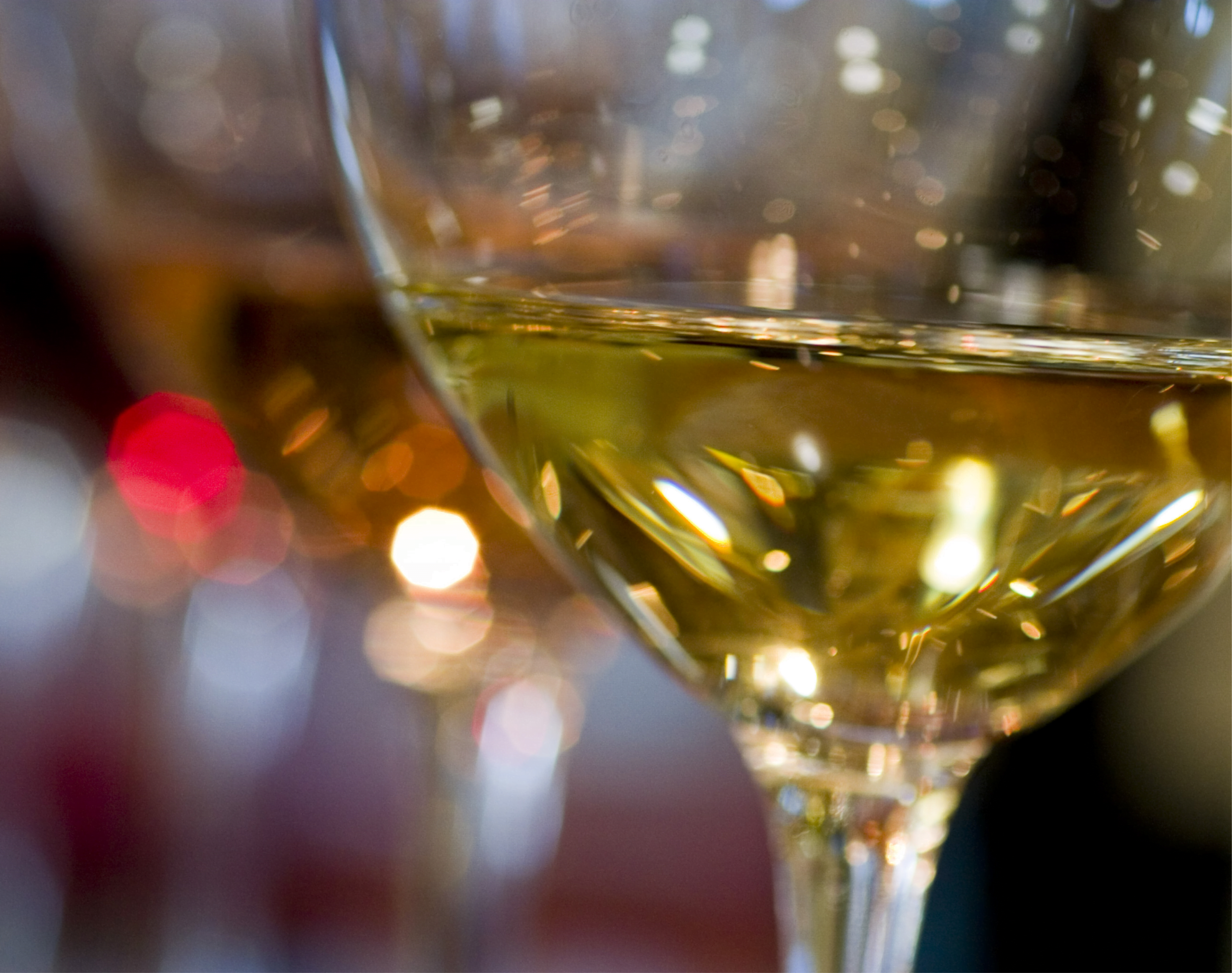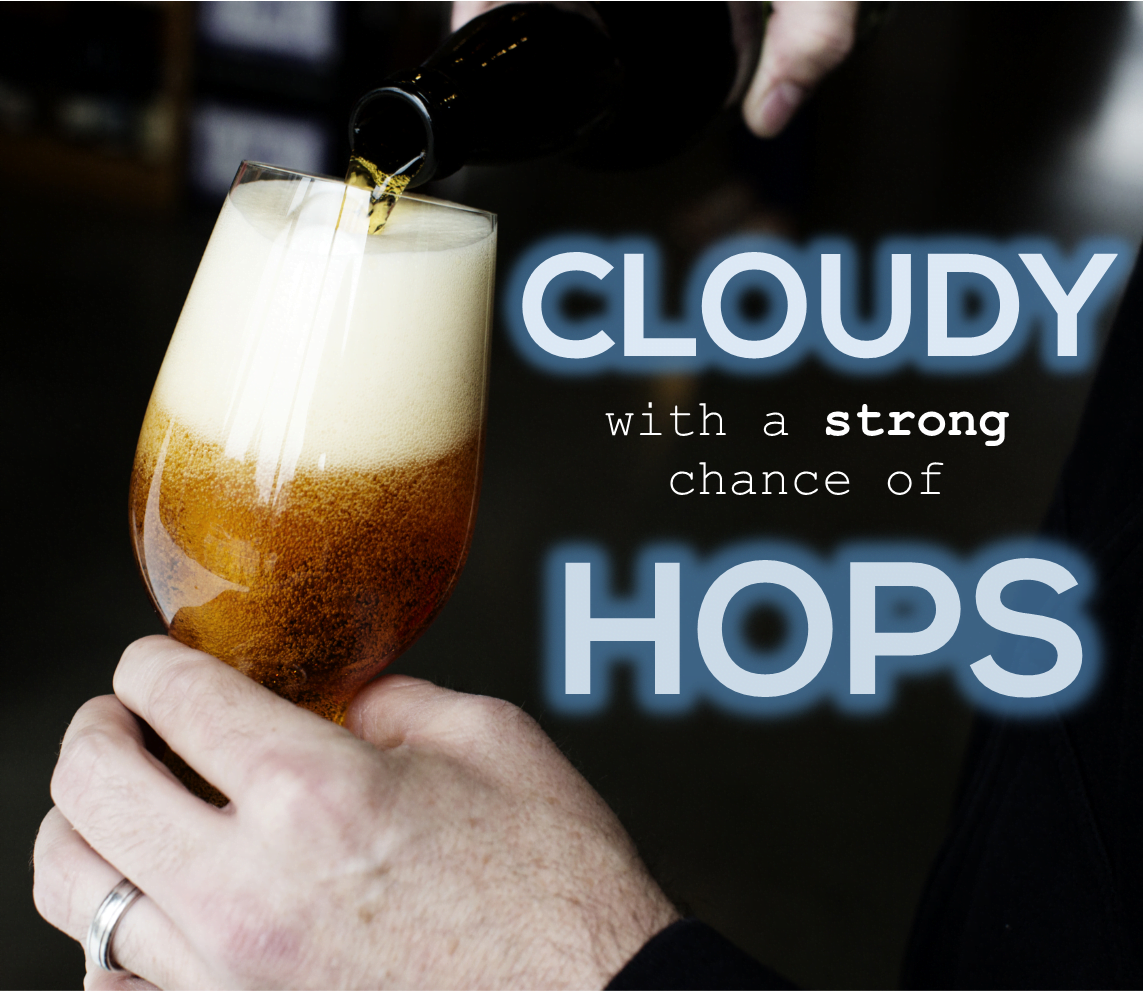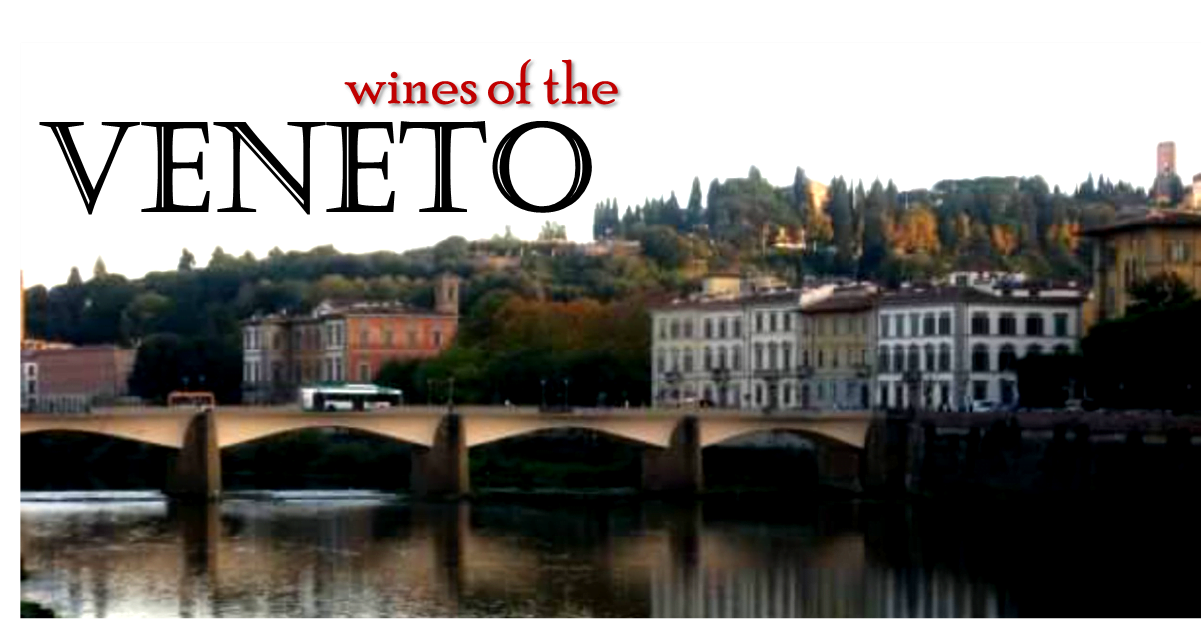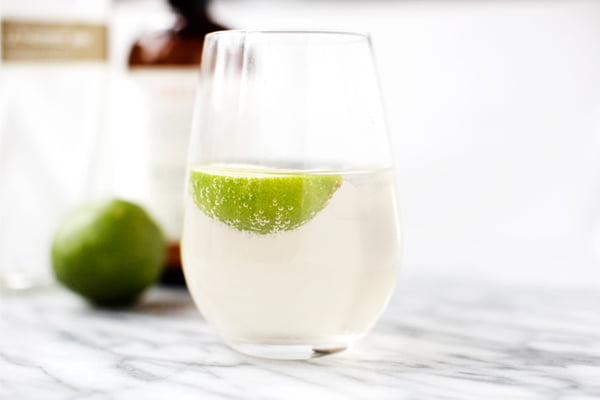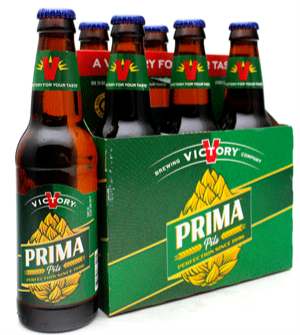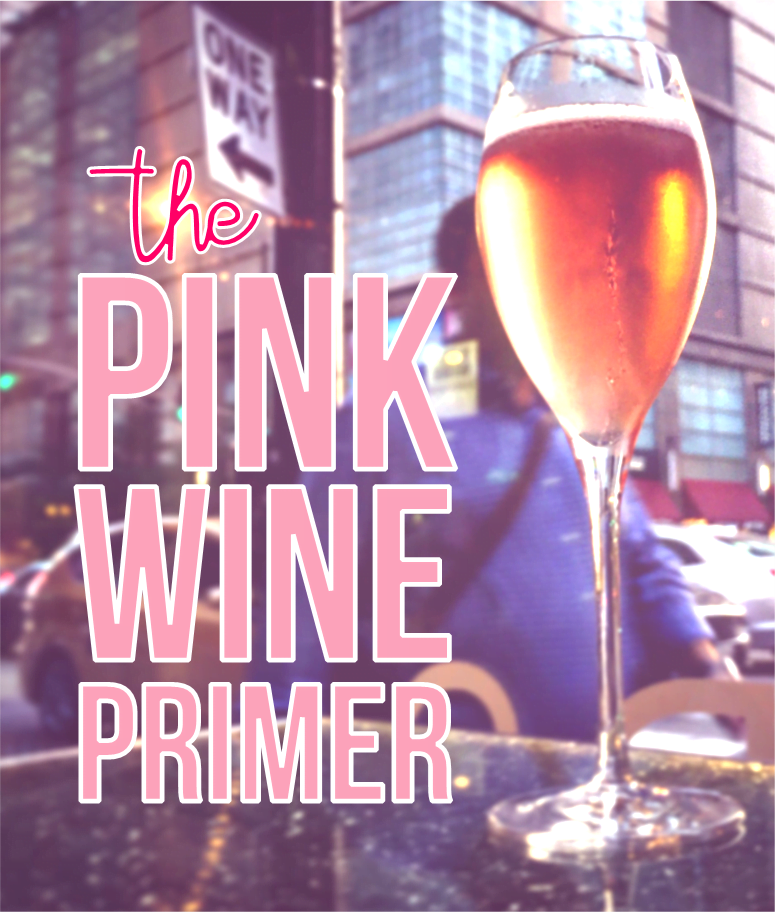A hard day’s work of lawncare and gardening must be rewarded with a refreshing beverage – beer! There are just a few ground rules to follow…
Continue readingLimited, Exclusive, and Drool-Worthy: The France44 Single Barrels
Bourbon is a hot commodity. It’s hard to keep up with the changing market, but we’re excited to announce the arrival of two brand-new single barrels of bourbon, Buffalo Trace and Eagle Rare, along with High West’s new edition of Yippee Ki-Yay Rye Whiskey!
France44 Exclusive Buffalo Trace Bourbon
Everything from the Buffalo Trace distillery is hard to get right now. Buffalo Trace’s namesake whiskey is no different, even if it only costs twenty-five bucks. Whenever we get the chance to get our own single barrel, we jump on it! This is one of the richest Buffalo Trace single barrels we have ever had–it’s super fruity on the nose with juicy red apple, toffee, and vanilla. The palate is much oakier and spicier than normal Buffalo Trace, showing nice leather and cinnamon. The finish is all orange rind and caramel, classic for Buffalo Trace and tailor-made for an Old Fashioned.
France44 Exclusive Eagle Rare 10 Year Bourbon
Two different single barrels from the famed Buffalo Trace distillery at once? You bet! Eagle Rare is Buffalo Trace’s 10 year offering, one of the best values on the shelf. It is one of only two 10 year bourbons we have bottled by the companies that distill them, along with Russell’s Reserve 10 Year from Wild Turkey. Every other 10 year bourbon was purchased by a merchant bottler at a young age and aged and bottled by a third party. The nose on this Eagle Rare exclusive bottling is filled with ripe red cherry, sweet cinnamon, and warming caramel. The palate shows vanilla, that same sweet cinnamon, and heady oak with a hint of cola spice on the finish. Great for sipping neat and a perfect fit in a Manhattan.
High West Yippee Ki-Yay Rye Whiskey
High West is a famed France44 favorite. Known as “the mad blenders”, High West has been known to go where no other company has gone before and try things never thought possible. For Yippee Ki-Yay, they took their classic staple Double Rye! Whiskey (a blend of 2 year high-rye rye whiskey and 16 year Kentucky low-rye rye whiskey) and finished it in a blend of Vya Sweet Vermouth and Qupe Syrah wine barrels. That’s right–a rye whiskey finished in sweet vermouth and Syrah! The end product is a beautiful and unique whiskey with a nose of rich candied orange almost akin to blood orange, and bright baking spices. On the palate there are hints of caramel sweetness but the rye starts to really shine with signature High West flavors of semi-sweet dill, fresh mint and caramel. There are lingering cherry tones with a sweet clove that lasts forever on the finish. It’s a quarter of the way to a cocktail in itself, beautiful neat or with one rock and an orange rind. Add just a splash of sweet vermouth (Carpano Antica) and you have yourself a unique and beautifully complex Manhattan.
Our shelves are stocked with great whiskey and it is constantly changing and renewing itself. We have all these and a few new gems on the shelves, and we’d love for you to come in and chat bourbon and rye with us anytime!
Wine Lies: What’s In A Name?
Question: Would a Moscato taste as sweet by any other name?
Answer: No… but it’s complicated.
It’s become a trend for Wine 101 posts to champion the forgotten and disparaged grapes of the world. In the past, we’ve gone to bat for Riesling and Merlot. There will always be bad wine in the world, and some of it is indeed Riesling and Merlot. Bad wine should be punished and run out of town. But don’t be prejudiced in your disgust—be disgusted only where disgust is merited. Not all Riesling is headache-inducing and cloyingly sweet. Not all Merlot tastes like Welch’s grape juice ramped up with alcohol and sawdust. There’s bad wine everywhere. But… there’s also good wine everywhere. And championing good wine is what Wine 101 is all about.
This time we’re bringing two completely opposite—yet still somehow devastatingly connected—wines to the fore. Here’s a little math to get us going:
MUSCADET ≠ MUSCAT/MOSCATO.
MUSCAT (France, Germany, etc.) = MOSCATO (Italy).
BUT…
MUSCAT does not always = sweet!
(Only after you’ve memorized those three axioms will you be allowed to proceed.)
Muscadet does not equal Moscato.
The idea that a region in France (Muscadet—pronounced MOOSE-ka-day) is the same as an Italian grape and wine style is one of the most unfortunate falsehoods in the wine world. I don’t know who was in charge of naming things at the Beginning of Wine (thanks, Bacchus), but they messed this one up pretty good. Muscadet (and more precisely, the sub-region of Muscadet Sevre et Maine) is an area located in the western part of France’s Loire Valley, just before the Loire River spills into the Atlantic Ocean. The most important grape grown there is called Melon de Bourgogne which, as you can imagine, doesn’t exactly have roots in the Loire Valley. Melon (mel-OWN) is one of the many offspring of Pinot Noir and Gouais Blanc, which makes it siblings with Chardonnay. Just like Chardonnay, it’s a fairly hardy grape that can grow well in cooler climates—an important feature for trying to make wine in northern regions like Burgundy and the Loire. Melon made the trek from Burgundy to the Loire around the early 18th century. Dutch traders needed a sturdier grape to withstand the cool coastal temperatures after their delicate red grape vines all froze and died during one particularly frigid winter. The Dutch planted scads of it, with the aim of shipping it up to the Netherlands to be made into brandewijn.

Today, Melon has become inseparable from its secondary coastal home. You’ve heard the saying, “What grows together, goes together”—think Muscadet and fresh oysters! This dry, fresh, mineral-driven wine is a perfect match for the saline notes found in oysters and other seafood dishes. Domaine de la Bretonniere makes a lights-out example—one with delicate orchard fruits, a zippy lemon note, and a whole lot of stony, salty, tanginess that will have you reaching for that 10th oyster and a second bottle.
Muscat (France, Germany, etc.) equals Moscato (Italy).
Ah, language. I say potayto, you say potahto. I say Pinot Gris, you say Pinot Grigio. Same story with Muscat and Moscato—it all depends on which country you’re standing in. But if we’re playing the “who said it first” game, the Italians have the upper hand. Moscato Bianco is also known as Muscat Blanc a Petits Grains—the noblest and oldest of all the 200+ Muscat varieties. It was one of the first grapes to be identified and cultivated because it had such a distinctive aromatic quality and delicious taste, which logically  attracted animals and humans to it. Today, Moscato is known worldwide as a light, frothy, pleasantly sweet wine with a pretty low alcohol content. But buyer beware: there’s a difference between Asti Spumante (or just “Asti”) and Moscato d’Asti! Asti Spumante is a marketing invention that has become the libation of choice for young drinkers, sorority girls and slumber parties around the globe. It’s sticky sweet, has more froth than flavor, and surprisingly higher in alcohol than its more traditional counterpart. Moscato d’Asti, on the other hand, is a beautifully balanced, fruity, lightly sparkling wine
attracted animals and humans to it. Today, Moscato is known worldwide as a light, frothy, pleasantly sweet wine with a pretty low alcohol content. But buyer beware: there’s a difference between Asti Spumante (or just “Asti”) and Moscato d’Asti! Asti Spumante is a marketing invention that has become the libation of choice for young drinkers, sorority girls and slumber parties around the globe. It’s sticky sweet, has more froth than flavor, and surprisingly higher in alcohol than its more traditional counterpart. Moscato d’Asti, on the other hand, is a beautifully balanced, fruity, lightly sparkling wine  with a more moderate amount of sweetness. The Moscato grapes are pressed, fermented until the alcohol level reaches just 5.5%, and then the juice is chilled and filtered immediately. The unfermented sugar left behind gives the wine a gently sweet character, and is packed full with ripe peach, orange blossom, ginger, mango, and candied nectarine. The production level of Asti Spumante outweighs Moscato d’Asti 3 to 1, but it’s well worth seeking out the slightly more expensive (but much better quality) Moscato d’Asti. Pick up a bottle of Vietti Cascinetta Moscato d’Asti for your next weekend brunch.
with a more moderate amount of sweetness. The Moscato grapes are pressed, fermented until the alcohol level reaches just 5.5%, and then the juice is chilled and filtered immediately. The unfermented sugar left behind gives the wine a gently sweet character, and is packed full with ripe peach, orange blossom, ginger, mango, and candied nectarine. The production level of Asti Spumante outweighs Moscato d’Asti 3 to 1, but it’s well worth seeking out the slightly more expensive (but much better quality) Moscato d’Asti. Pick up a bottle of Vietti Cascinetta Moscato d’Asti for your next weekend brunch.
 France does things a little differently with Muscat. The northeastern region of Alsace does it dry, and thinks it’s so cool that it’s listed as one of the 4 noble grapes of Alsace. Southern France has oodles of it, but makes it in a plethora of styles. One of the most common styles comes from the little village of Beaumes-de-Venise, located in the region of Vaucluse. Here, Muscat is made into a vin doux naturel—a sweet, fortified dessert wine. Domaine de Durban’s Muscat de Beaumes-de-Venise has a thick, honeyed texture with aromas of baked apple, pear, dried honey, and a bitter floral note on the finish. Pair this affordable dessert wine with strawberries and cream for Wimbledon this summer.
France does things a little differently with Muscat. The northeastern region of Alsace does it dry, and thinks it’s so cool that it’s listed as one of the 4 noble grapes of Alsace. Southern France has oodles of it, but makes it in a plethora of styles. One of the most common styles comes from the little village of Beaumes-de-Venise, located in the region of Vaucluse. Here, Muscat is made into a vin doux naturel—a sweet, fortified dessert wine. Domaine de Durban’s Muscat de Beaumes-de-Venise has a thick, honeyed texture with aromas of baked apple, pear, dried honey, and a bitter floral note on the finish. Pair this affordable dessert wine with strawberries and cream for Wimbledon this summer.
Muscat does not always = sweet!
As we just mentioned, Alsatian Muscat is revered not for its sugar, but for the lovely floral perfume that it provides. And other wine regions capitalize on this part of Muscat, too: the Spanish producer Avinyo makes a dry, slightly-sparkling version that they term “vi d’agulla,” which is Catalan for “prickly wine.” Grown in calcareous clay and  fermented in stainless steel to preserve the fresh, mineral quality of the wine, it’s hands-down one of the most beloved spring and summer sippers we’ve come across. Freshly-picked green apple, delicate white wildflowers and a hint of edgy menthol fly out of the glass. This wine is more fully fermented than what you’ll find in Moscato d’Asti (and therefore much drier), putting it up around 10.5%. It’s gulpable, refreshing, and ultra-flexible with food—three of the many reasons we stock up on this delightful wine as soon as the first snowflake melts.
fermented in stainless steel to preserve the fresh, mineral quality of the wine, it’s hands-down one of the most beloved spring and summer sippers we’ve come across. Freshly-picked green apple, delicate white wildflowers and a hint of edgy menthol fly out of the glass. This wine is more fully fermented than what you’ll find in Moscato d’Asti (and therefore much drier), putting it up around 10.5%. It’s gulpable, refreshing, and ultra-flexible with food—three of the many reasons we stock up on this delightful wine as soon as the first snowflake melts.
Lesson #1: Muscat, Moscato, Gelber Muskateller, Moscatel—whatever you may call it, it deserves respect. There’s a reason this grape has a spot at the top of history’s list of noble varieties that have stood the test of time.
Lesson #2: Don’t confuse Muscat (as wonderful as it can be) with Muscadet! Even though the names sound way too similar, this is worse than getting Sarah Michelle Gellar and Mister Ed confused for each other. Muscadet is bone dry and goes great with oysters. Muscat is (sometimes) sweet and goes great with pancakes.
Two cheers (separately and in different parts of the building) for Muscat and Muscadet!
Cloudy with a Strong Chance of Hops
Do you drink beer? If so, you have probably noticed the opaque, juice-like beer flowing from draft lines across the country. These aromatic, pulpy, hop-bomb IPAs are currently the hottest trend in beer, elevating some small brewers to near superstar status. But this popularity has its roots in a style that’s been brewed in New England for nearly fifteen years now. John Kimmich, owner of The Alchemist brewery in Vermont, has been brewing the famous Heady Topper IPA since 2004 – a stalwart on BeerAdvocate’s Top 10 list since 2011. Kimmich doesn’t filter or pasteurize his celebrated product. Heady packs fruit-bowl sensations and silky, seamless bitterness into an unassuming silver can.
Kimmich and other noteworthy New England brewers are viewing IPAs through a different lens. Throughout much of the 2000s the belief was that bitter is better. Brewers, chiefly from the west coast, were punishing palates by elevating IBUs (International Bitterness Units) to extraordinary levels. Beer connoisseurs were deemed worthy by summiting Mt. Bitterness at an elevation of 100+ IBUs. But this youthful league of east coasters have turned their back on bitterness, favoring intensely aromatic and flavorful hop character. A Boston Celtics – Los Angeles Lakers like rivalry has ensued.
It all comes down to how and when the hops are utilized. Hop flowers have compounds called alpha acids that are isomerized when added to boiling wort (the precursor to beer). This isomerization is what creates bitterness. Adding hops early extracts more bitterness, but less character. Late addition hops are retain more volatile aromatic and flavorful compounds in the beer, but contribute less bitterness. New England brewers have been crafting their IPAs by favoring the latter. Little attention is given to IBU levels, the goal being bright hop aromas, a full, juice-like mouthfeel, and low bitterness.
Where does the haze come from? It’s actually a byproduct of the methods used to create this flavor profile. East coast IPAs receive little bittering hop additions, with lots of late addition hops and aggressive dry-hopping. This regimen can be carried out to such a degree that the beer is inflicted with a permanent “hop haze,” caused by microscopic vegetable matter. Certain yeast strains will also encourage turbidity and produce fruity esters. The last step is minimizing or omitting filtration. Fining and filtering is important for shelf life and stability, but it can also strip particulates and proteins from beer that enhance mouthfeel and flavor. New England style IPAs are best consumed fresh, and if you can find one on shelves it probably hasn’t been there long anyway.
Once just a modestly popular regional specialty, New England IPAs are a sensation that is here to stay. Brewers from the Midwest and West coast have even hopped on the bandwagon, putting their own spins on the style. Though there are just a handful available in the Midwest at the moment, don’t expect it to stay that way. Here are some of our France 44 favorites:
Sixpoint Puff Cloudy Double IPA – $11.99/4pk
Modist Dream Yard IPA – $13.49/4pk
Lupulin Blissful Ignorance Double IPA – $11.99/4pk (this ultra-popular beer is hard to keep in stock–check with us next week!)
Insight East vs. West IPA – $12.49/4pk
Ballast Point Unfiltered Sculpin IPA – $14.99/6pk
The Many Faces of Venetian Wine
Amarone: just the name induces a widening of the eyes, involuntary salivation, and a nostalgic smile. If you’ve had it, you know what kind of an impact it makes—one that you don’t forget easily. Amarone is one of the most iconic wines of northern Italy, sharing the same level of prestige as Barolo. But what is it exactly, why is it so darn expensive, and are there alternatives you can explore?
Italy’s Veneto region, where Amarone comes from, is the biggest wine producing region in the country. Its climate is temperate, the soils are rich, and the hills are gently sloped to just the right angle for perfect ripening. But Amarone isn’t the Veneto’s only gem.
The region of Valpolicella, located just north of Verona, is broken up into several different subregions, each with their own detailed classification system. But rules are boring and complicated (let’s just call them “guidelines,” am I right?), so the Veneto is rife with dozens of different styles, expressions, and interpretations of wine—depending on where they’re located… and which “guidelines” they feel like following.
VALPOLICELLA
The most basic, straightforward, least-complicated appellation is Valpolicella (and Valpolicella Classico—a more delineated subregion within the bigger one). Made in the same way as every other normal table wine you’ve ever had, it’s made from a maximum of 70% Corvina, which is the Veneto’s star grape. Fresh, fruity and easy-drinking, most Valpolicella is meant to be consumed in its youth. The Tommasi Rafael is technically Valpolicella Superiore, comes from a single vineyard (“Rafael”) within Valpolicella, and is absolutely delightful to drink. Besides Corvina, there’s a good measure of Rondinella (Corvina’s “sister grape”) that helps add color to the blend, as well as a slew of other indigenous grapes. Bright red fruits, including strawberry and cherry, are framed by a pretty floral note. The tannins are soft and pliable, making this a winner by itself or with lighter meals and cheese and meat plates. The Degani Valpolicella is made in a similar style, but with a touch more of an herbal note to it along with the fruit.
AMARONE
On the other end of the spectrum is Amarone. This special appellation dates back to the 8th century in Verona, when it became necessary to differentiate a dry wine made from dried grapes, from a sweet wine (called recioto). Grapes to go into Amarone are hand-picked, laid out to dry in shallow crates, and then tucked away in “drying houses” with big, open-air windows to let the wind come in. (It’s the wind that dries out the grapes—not the sun!) After a minimum of 100 days, the grapes are pressed and a long, slow fermentation happens. The Tedeschi Amarone is packed to the max with thick, dark fruit, raisin and prune notes, and a beautifully balanced structure with firm tannins but a lingering acidity which keeps this wine powerful, but dry. The Tommasi Amarone is just a touch lighter, with deep, rich flavors and an enlivening spice weaving its way across your palate. For a unique experience with an aged Amarone (these wines can last a long time), try the 2007 Venturini Amarone. In this expression, the ripe fruit dies away to reveal nuanced aromas and tastes of spice box, sweet tobacco, and potpourri.
RIPASSO
In the middle of these two extremes (and for less than half of what Amarone costs) you’ll find the Ripasso style. Literally meaning “to re-pass,” this method consists of pouring normal Valpolicella wine over the grape must (the skins, seeds, stems and pulp) left over from the Amarone. This gives the ripasso wine a noticeable Amarone character, but with a lighter texture and body. These wines are fantastic values, and are incredibly unique to experience. The Tommasi Ripasso and the Remo Farina Ripasso have rich, sappy fruit (reminiscent of Amarone) but also a fresh, green herbal note. In Tommasi’s case, they actually throw the Amarone skins directly into the ripasso’s fermentation tank so it gets as much Amarone character as possible.
…AND EVERYTHING ELSE IN BETWEEN
And when all those styles just mentioned aren’t enough for the creativity of Veneto winemakers, you can just label your wine IGT Veneto. This designation lets wineries do projects like Allegrini Palazzo della Torre, where a portion of dried “Amarone-style” grapes are used in the blend with normal Valpolicella wine, or Tedeschi “Appassimento” Nicalo, where the grapes are hand-picked and dried in the exact same method as Amarone, but for only one month instead of three. The result of these wines is something in-between Ripasso and Amarone.
The Veneto has a wine style for everyone: light-bodied or full-bodied; fruity or earthy; easy-drinking or serious; wines for cellaring or drinking now. This historic region is one of the most traditional–and yet one of the most innovative–that Italy has to offer.
Ginning from Ear to Ear
Get fresh with a few of our favorite gins—from the tried-and-true to the fantastically funky. Check out 4 of our springtime picks, complete with suggestions for some killer cocktail recipes for each. Let the weekend be Gin!
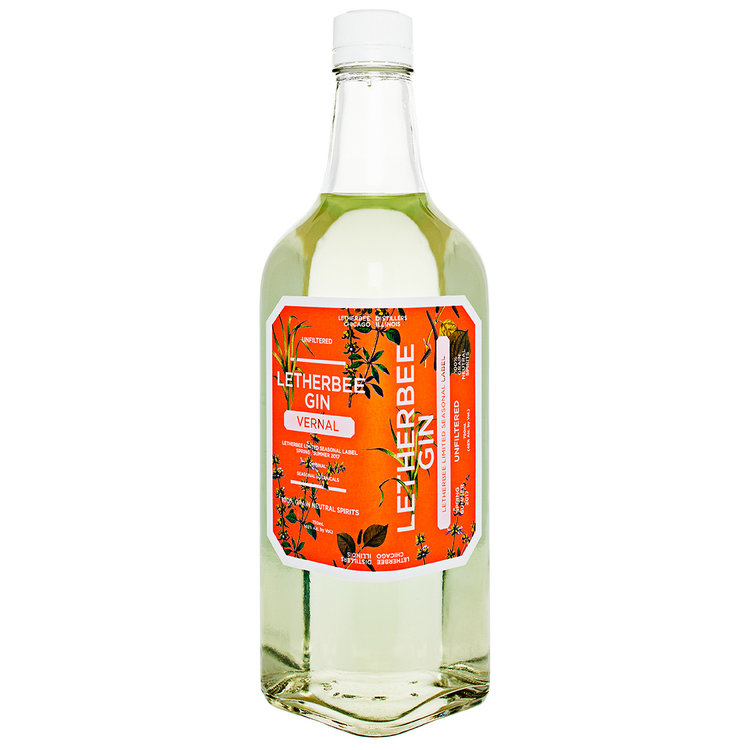
Letherbee Vernal 2017
Letherbee, a France 44 favorite hailing from Chicago, have graced us with a few cases of their brand-spanking-new Vernal Gin! Every spring and fall they make a different unique gin that they will never replicate. This year’s Vernal is highlighted by fistfuls of fresh lemongrass, crisp basil on the nose, and a spicy ginger that pops on the palate.
This rare gem is perfect with some Fever Tree Naturally Light Tonic Water to highlight the fresh herbs, or in a martini with a lemon twist.
Barr Hill Gin
Caledonia Spirits out of Vermont are known for two things: Gin and Honey. They are originally an apiary—that’s right, bee farmers! As an ode to their bees, they make a very clean and simple gin infused solely with juniper, and then water it down to 90 proof with their own honey. The honey comes from clover and wildflower, and those nuanced flavors shine with the spicy juniper and sweet thick body the honey gives the spirit.
This gin is great with some crisp clean Q Tonic to cut some of the thickness or in a classic Bee’s Knees cocktail with lemon and honey.
Cannonball Navy Strength Gin
Looking for something with a little more punch? The brand new navy strength gin from Scotland, Cannonball, has you covered. Clocking in at the classic 114.4 proof that the British Navy used to carry on their ships, this brutish gin has twice the juniper of most gins with lemon peel to balance and an unusual ingredient in Szechuan pepper!
Big, bold, and spicy on the palate, this gin is best drunk with the full flavor of Fever Tree Indian Tonic or in a spicy negroni with Campari and Carpano Antica Sweet Vermouth. You’ll have a blast with this one!
Norseman Strawberry Rhubarb Gin
Northeast Minneapolis’s local staple Norseman is back at it again with their Strawberry Rhubarb Gin. This lighter style gin is made with Minneapolis grown rhubarb and is great for those in your life that think they don’t like gin and need a little nudge in the right direction. The slight sweetness from the strawberry gives it body while the juniper and rhubarb play together with interesting complexity. Remember that rhubarb itself is almost 100% water, so the note of rhubarb is light. But with a squeeze of fresh citrus (squeeze that lime!) the rhubarb brightens up and becomes tart.
Best served with Fever Tree Mediterranean Tonic for added dry floral tones and a hefty squeeze of lime.
Return of the Pils
A short time ago in a galaxy not so far, far away…
Luke Skybrewer has returned to his home planet of Earth in an attempt to rescue his favorite style, Pilsner, from the clutches of the vile gangster Jabba the HuttWeiser.
Little does Luke know that the Galactic Macro-Empire has secretly begun construction on a new armored marketing campaign even more powerful than the dreaded “Most Interesting Man in the World.”
When completed, this ultimate weapon will spell certain doom for the small band of craft brewers struggling to restore freedom to the galaxy…
—————————————————————————————————————————————–
Pilsner: the template for the most consumed style of beer in the world, it has become near synonymous with lager, and most current industrial examples lack any resemblance to the original. What is to become of the dwindling few of authentic but battle-scarred pilsners? Let’s wind the clock back a bit.
In the mid-19th century, Bohemian brewers were searching for a way to recreate a Bavarian-style lager in their hometown of Plzeň. The result was revolutionary. Czech ingredients proved to be the defining character of the crisp, honey-hued beer that poured forth. Locally grown Saaz hops contributed a spicy, grass-like aroma and soft, seamless bitterness. Moravian barley lent a lightly sweet graham-cracker like malt character to balance. And the biggest influence – the soft, sandstone-filtered Plzeň water – allowed the ingredients to speak. People were infatuated by its sharp, crisp taste and pillowy head of foam.
Though the Czechs can take the creative credit, there are three distinct variations of this hop-forward lager style. The original Czech pilsner has a deeper hue, with softer sweetish maltiness and a floral, grassy aromatic presence. German pilseners are more highly-attenuated (dry), earthy, with a more aggressive hoppy bitterness derived from a differing variety of hop selections. After these are the international pilsners, a category that encapsulates the macro-production pilsners we are familiar with today, ex. Heineken, Stella Artois. These beers offer a touch more sweetness and less substantial hop character for the sake of agreeability. Then there are adjunct lagers marketing themselves as pilsners, we’ll just skip that subject.
Over the last few decades, Pilsner has been a benchwarmer beer-style for craft brewers. Already comprising most of the world’s homogenized beer production, who needs yet one more Pils? It is a quaffing beer, not one on which craft brewing reputations are typically built. This once golden child of the brewing world has taken a long ride in the back seat…
Hush, did you hear that? There is change in the winds, my friends. From what I see as a reaction to the brazen, over-amped flavors of countless new releases, some craft brewers are pioneering the return of the Pils. Fruit-infused, hazy IPAs and barrel-aged stouts may be grabbing headlines, but a remarkable pilsner can be the unbreakable foundation upon which breweries stand the test of time. The popularity of juicy hop flavor and massive vanilla-laden oak may wax and wane, but pilsner is forever. Crisp, clean, and invigorating on the palate, with distinct noble hop character and delicate malt balance, pilsner is bringing fame back to lagers.
—————————————————————————————————————————————–
Try a few of our France 44 favorites:
Indeed B-Side Pils – $8.99/6pk (German-style Pilsener)
flowery/orange zest aroma, crackery malt, bitter hop, delicate effervescence
Fair State Pils – $9.49/4pk (German-style Pilsener)
spicy/earthy hop, super clean malt, brisk finish
BauHaus Wonderstuff Neu Bohemian Pilsner – $8.99/6pk or $16.99/12pk (Czech-style Pilsner)
citrus hop, smooth malt, balanced
Bent Paddle Venture Pils – $10.49/6pk (German-style Pilsener)
lemon/grassy hop, clean malt, easy finish
Founders PC Pils – $8.99/6pk or $16.99/15pk (American-hopped Pils)
punchy “C” hops citrus/pine aroma, pleasantly crisp/clean malt, hop kick finish
Victory Prima Pils – $9.49/6pk (German-style Pilsener)
spicy/herbal hop, biscuity malt, spicy/bone dry finish
Pilsner Urquell (The Original Pilsner) – $7.99/4pk (Czech Pilsner)
herbal hop, full honey nut malt, lightly bitter finish
 Weihenstephaner Pils – $10.99/6pk (German Pilsener)
Weihenstephaner Pils – $10.99/6pk (German Pilsener)
firm noble hop aroma, dry bready malt, assertively bitter finish
Coming Into Wine Consciousness: Looking “Sideways” at Merlot
How could a 5-second clip from a tawdry 2004 movie devastate an industry? But it didn’t. We just missed the point.
Continue readingThe Pink Wine Primer
We’ve put together a helpful Pink Wine Primer for this fresh new season of rosé!
Continue readingEaster Preorder
Make sure you have everything you need for a beautiful holiday meal. Starting now, you can preorder whole house-smoked hams, and cuts of lamb to pick up the week of Easter!
Continue reading
